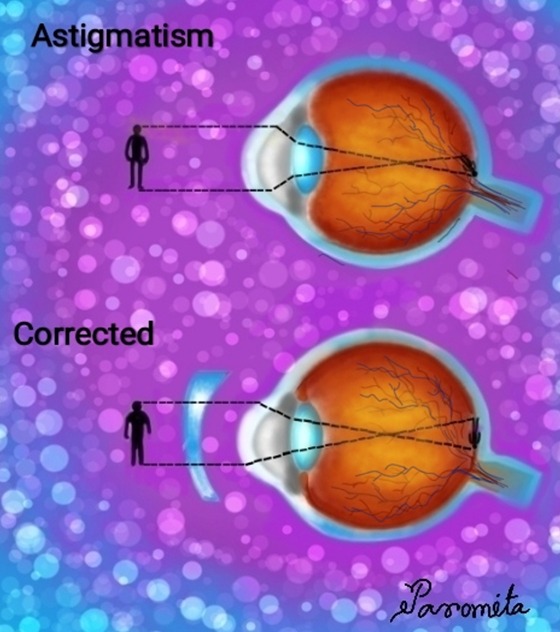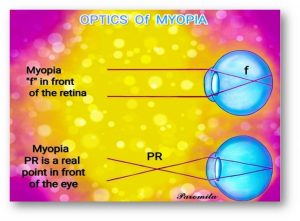SIMPLE TIPS FOR KEEPING YOUR EYES HEALTHY
Our eyes are one of the most important parts of our body, allowing us to experience the world around us. However, many of us often take our
eye health for granted. Just like any other part of our body, our eyes require care attention. Understanding the basics of eye health can help us make better choices to protect our vision.
The Importance of Regular Eye Exams
Frequency of Exams: Adults should have their eyes checked at least every two years, while those over 60 or with existing conditions may need annual visits.
What to Expect: During an exam, an eye care professional will check your vision, assess eye health, and look for signs of diseases like glaucoma or cataracts.
Protecting Your Eyes from Digital Strain
In today’s digital age, many of us spend hours in front of screens, whether for work or leisure. This can lead to digital eye strain, which can cause discomfort and affect our vision.
Digital eye strain, also known as computer vision syndrome, is common in people who spend long hours on digital devices.
Here are some effective ways to protect your eyes from digital strain are as follow:-
1. Follow the 20-20-20 Rule:
Every 20 minutes, take a 20-second break and look at something 20 feet away to give your eyes a chance to relax.
2. Adjust Your Screen Settings:
Brightness: Match your screen brightness to the lighting around you. If your screen looks like a light source, it’s too bright.
Text size and contrast: Increase text size and adjust contrast to reduce strain when reading for long periods.
Color temperature: Reduce the blue light emitted by screens, especially during the evening. Use “night mode” or blue light filters if available.
3. Blink More Often: People tend to blink less when staring at screens, which can cause dryness and discomfort. Make a conscious effort to blink to keep your eyes lubricated.
4. Maintain Proper Screen Distance: Keep your screen about 20-24 inches (about arm's length) from your eyes and slightly below eye level.
Digital eye strain, also known as computer vision syndrome, is common in people who spend long hours on digital devices. Here are some effective ways to protect your eyes from digital strain:
1. Follow the 20-20-20 Rule
Every 20 minutes, take a 20-second break and look at something20 feet away to give your eyes a chance to relax.
2. Adjust Your Screen Settings
Brightness: Match your screen brightness to the lighting around you. If your screen looks like a light source, it’s too bright.
Text size and contrast: Increase text size and adjust contrast to reduce strain when reading for long periods.
Color temperature: Reduce the blue light emitted by screens, especially during the evening. Use “night mode” or blue light filters if available.
3. Blink More Often
People tend to blink less when staring at screens, which can cause dryness and discomfort. Make a conscious effort to blink to keep
your eyes lubricated.
4. Maintain Proper Screen Distance
Keep your screen about 20-24 inches (about arm's length) from your eyes and slightly below eye level.
5. Use Anti-Glare Screens: Reduce glare from windows or overhead lighting by using an anti-glare screen protector or adjusting
your screen position.
6. Optimize Your Workspace Lighting: Ensure the lighting in your room is not too bright or too dim, and avoid direct light shining on your screen. Indirect lighting is better for your eyes.
7. Wear Computer Glasses: Specially designed computer glasses with anti-reflective lenses or blue light-blocking lenses can help reduce
eye strain, especially if you spend prolonged hours in front of digital screens.
8. Take Regular Breaks: Step away from your screen for at least 5-
10 minutes every hour. Move around, stretch, and rest your eyes from close-up work.
9. Keep Your Eyes Hydrated: Use lubricating eye drops or artificial tears if your eyes feel dry. Drinking plenty of water also helps keep your eyes hydrated.
Digital eye strain, also known as computer vision syndrome, is common in people who spend long hours on digital devices. Here are some
effective ways to protect your eyes from digital strain:
1. Follow the 20-20-20 Rule
Every 20 minutes, take a 20-second break and look at something
20 feet away to give your eyes a chance to relax.
2. Adjust Your Screen Settings
Brightness: Match your screen brightness to the lighting around you. If your screen looks like a light source, it’s too bright.
Text size and contrast: Increase text size and adjust contrast to reduce strain when reading for long periods.
Color temperature: Reduce the blue light emitted by screens, especially during the evening. Use “night mode” or blue light filters if available.
3. Blink More Often
People tend to blink less when staring at screens, which can cause dryness and discomfort. Make a conscious effort to blink to keep your eyes lubricated.
4. Maintain Proper Screen Distance
Keep your screen about 20-24 inches (about arms length) from your eyes and slightly below eye level.
5. Use Anti-Glare Screens
Reduce glare from windows or overhead lighting by using an anti- glare screen protector or adjusting your screen position.
6. Optimize Your Workspace Lighting
Ensure the lighting in your room is not too bright or too dim, and avoid direct light shining on your screen. Indirect lighting is better for your eyes.
7. Wear Computer Glasses
Specially designed computer glasses with anti-reflective lenses or blue light-blocking lenses can help reduce eye strain, especially if you spend prolonged hours in front of digital screens.
8. Take Regular Breaks
Step away from your screen for at least 5-10 minutes every hour. Move around, stretch, and rest your eyes from close-up work.
9. Keep Your Eyes Hydrated
Use lubricating eye drops or artificial tears if your eyes feel dry. Drinking plenty of water also helps keep your eyes hydrated.
10. Update Your Prescription
If you wear glasses or contact lenses, ensure that your prescription is up-to-date. Vision changes over time, and improper lenses can contribute to digital strain.
11. Limit Screen Time Before Bed: Avoid using digital devices at least one hour before bed to reduce blue light exposure, which can affect your sleep cycle and eye health.
Nutrition for Eye Health
What we eat plays a significant role in our overall health, including our eye health. A balanced diet rich in specific nutrients can help protect our vision. Key Nutrients for Healthy Eyes
Vitamin A: Essential for good vision, found in carrots, sweet potatoes, and spinach.
Omega-3 Fatty Acids: Important for retinal health, found in fish like salmon and flaxseeds.
Antioxidants: Vitamins C and E can help protect against age- related eye diseases. Citrus fruits, nuts, and green leafy vegetables are great sources.
Protecting Your Eyes from the Sun
Just like our skin, our eyes can be damaged by the sun’s harmful rays. Protecting our eyes from UV radiation is crucial for long-term health.
Simple Ways to Shield Your Eyes
Wear Sunglasses: Choose sunglasses that block 100% of UVA and UVB rays. This can help prevent cataracts and other eye issues.
Wide-Brimmed Hats: Wearing a hat can provide additional protection from the sun, especially during peak hours.
Avoid Tanning Beds: These can also emit harmful UV rays that can damage your eyes.
Staying Hydrated
Staying hydrated is essential for overall health, including eye health. Dehydration can lead to dry eyes, which can be uncomfortable and affect vision.
Tips for Staying Hydrated:
Drink Plenty of Water: Aim for at least eight glasses a day, more if you are active or in a hot climate.
Eat Water-Rich Foods: Incorporate fruits and vegetables like cucumbers, oranges, and watermelon into your diet to boost hydration.
Conclusion
Taking care of your eyes doesn’t have to be complicated. By following these simple tips, you can help ensure your eyes stay healthy and your vision remains clear. Remember, your eyes are your window to the world—treat them well!










